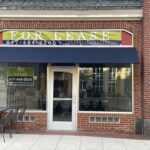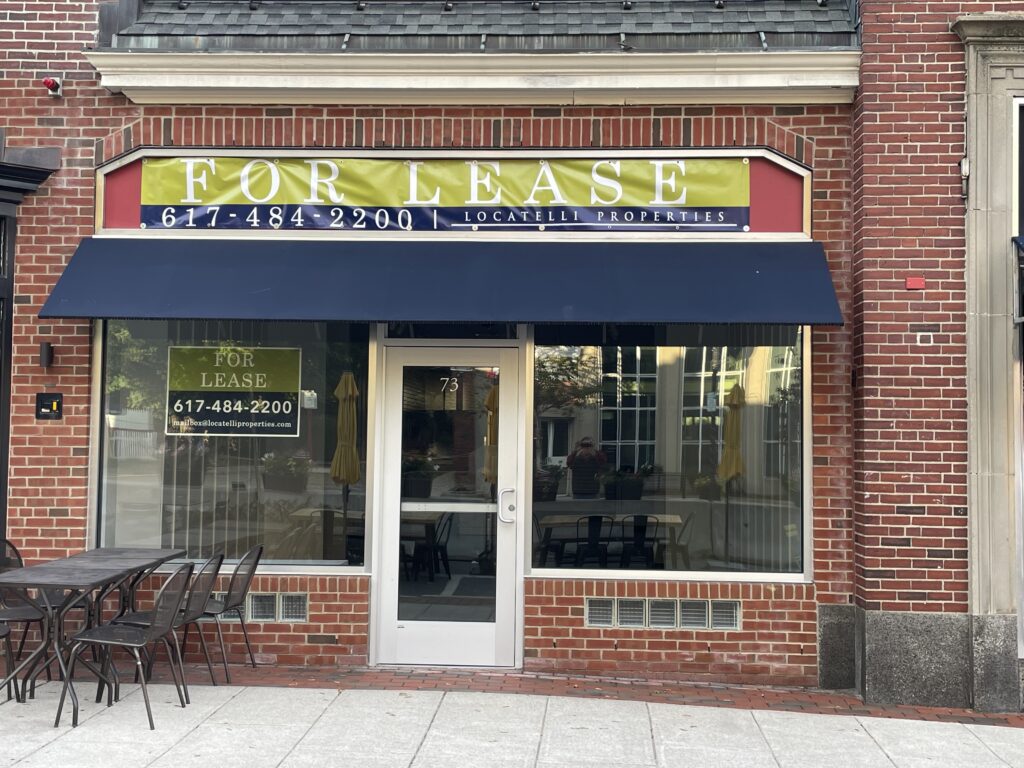
By Paul Joy and Taylor Yates
One of the key issues that both the Vision 21 Implementation Committee and the Economic Development Committees grapple with is the long-term vacant storefronts in our vital commercial areas: Belmont Center and Cushing Square.
Our committees are asked constantly about what Belmont should be doing to address these issues and drive down the vacancy rates in places like Leonard Street, which was reported to have a 20% vacancy rate by the Belmont Center Business Association. Large vacancies such as the old CVS space continue to languish as well. We agree that the situation here begs for immediate attention and innovative solutions.
To put this vacancy rate in context, the Boston Metro Area recently reported that Boston tied Miami and Raleigh for the lowest retail vacancy rate in America, a mere 2.9%, according to a report from Marcus & Millichap. This metric indicates that it is harder than ever for businesses in our region to find suitable space to start and grow.
At the same time, neighborhoods like Belmont Center struggle with empty storefronts that harm our quality of life and the stores around them. Empty storefronts don’t draw foot traffic, and that lack hurts every business in the neighborhood. Not having any significant anchor businesses in either the center or Cushing Square also harms existing businesses.
Why Does Belmont Need a Vacancy Bylaw?
Our committees have found several innovative initiatives that neighboring towns are implementing to tackle these problems. Take our neighbor, Arlington. Based on our discussions with their town staff, business community representatives (many of whom also have Belmont storefronts), and our personal experience with vacancy rates, Arlington has had great success with their storefront vacancy bylaw, and it remains a very popular program.
A storefront vacancy bylaw would create a storefront vacancy registration program, reducing search costs for businesses seeking locations in Belmont. Rather than drive around town looking for a promising storefront, tracking down the owner’s contact information, and then waiting to get basic information from the owner, every vacant storefront can be listed online, in one place. While we acknowledge that Belmont and Arlington are not identical, they are similar enough that when Arlington pilots a successful program, it makes sense for Belmont to consider it.
Timeline to Town Meeting
We have already completed a draft of specific zoning language to tackle this issue, and we will present our proposal to the Planning Board this spring. If the Planning Board takes up this zoning bylaw change, a statutory period for review and public comment would be held, likely over the summer, to ensure we stay on track to present it at the fall Special Town Meeting. With any luck, Belmont could implement the bylaw by the start of 2025, creating an important tool to improve our town’s vibrancy.
While we are thrilled that the recent override was successful, it doesn’t mean that we can or should stop zoning bylaw reform. If this election taught us anything, it was that candidates, voters, and elected leaders believe that expanding the commercial tax base is critical for Belmont’s long-term success.
Paul Joy is chair of the Economic Development Committee, a member of the MBTA Communities Advisory Committee, and a Precinct 7 Town Meeting member. Taylor Yates is chair of the Vision 21 Implementation Committee, a Planning Board member, and a Precinct 2 Town Meeting member.



Sorry, the comment form is closed at this time.